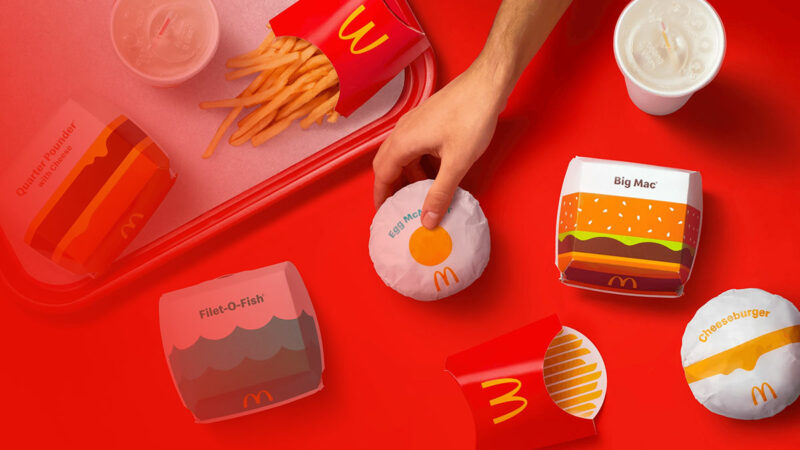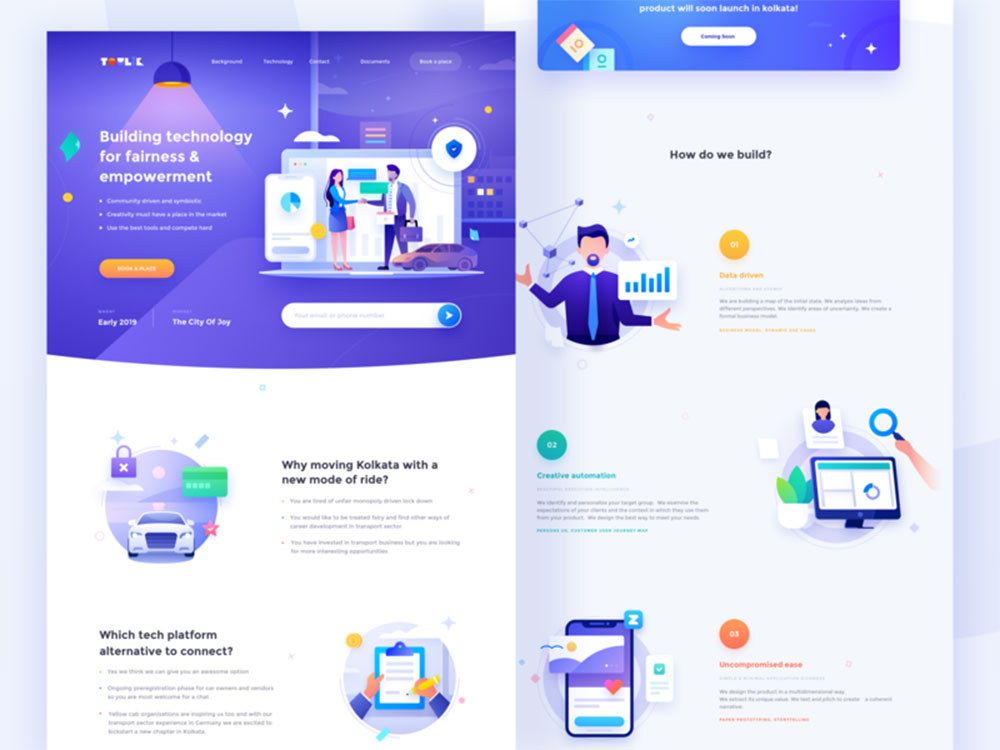7 Common Design Mistakes That Hurt Your SEO Efforts

While fresh, relevant, and high-quality content remains king, content alone is not enough to boost your organic traffic and conversions. According to Google’s John Mueller, and as we’ve seen with one of the recent updates to Page Experience, your website’s design has a great impact on Search Engine Optimization (SEO).
Your web design is the first thing people see when they interact with you online. Suffice to say, it can make or break the user experience (UX).
Unfortunately, most website designers don’t always place great value on proper website design, and it shows in their sites ranking on search results.
In this guide, we take a look at 7 of the most common mistakes web designers make when designing a website. Avoid these mistakes by all means if you’re keen to improve your website’s search ranking.
Site Navigation Flaws
Site navigation is one of the most critical yet overlooked aspects of web design. If your site has a complicated navigation scheme, then chances are it will have a high bounce rate.
“Web users backing away from your site as soon as they get in is not a good sign in the eyes of Google. It sends negative signals about your website and can negatively impact your search rankings,” states Jason Morris, Founder at Profit Engine.
To avoid this, streamline your navigation so site visitors know exactly what to do at a glance. The ideal navigation isn’t just about the visual elements of your site—it takes into account everything from your users’ habits to your site’s overall accessibility across devices: mobile, tablet, and desktop.
Ask yourself: Are the navigational tools like menus and search bars functional? Are they easy to click on with a finger, even on a smaller screen? What are your most important pages? Have you linked pages that attract the most attention?
If your website has a lot of content and limited space, you might want to use expandable links and hidden sliding drawer menus. The goal is to ensure it’s easy and intuitive for users to navigate and for Google’s web crawlers to better understand your website.
Sluggish Page Load Speed
Page speed is a crucial ranking factor that influences a website’s position in the SERPs. If your site takes forever to load, your visitors will exit as soon as they enter, and this has a negative effect on your organic traffic.
Your pages should take no more than 2-3 seconds to load or your visitors won’t bother staying on your website.
Using Google’s PageSpeed Insights (PSI), you can measure your website’s page load time and understand what causes the delay of your page load time.
The most common reasons your pages may take longer to load include but not limited to:
Theme
Ditch your sluggish WordPress theme for one of the responsive, tried-and-tested favorites such as Hello, Astra or OceanWP.
Image Size and Format
Reduce the bandwidth used up by images. Resize your images to 72 dpi and use formats like JPEG XR, JPEG 2000, and WebP.
JavaScript and CSS
Use shorter variables for JavaScript and CSS code to reduce the size and increase your page load speed.
Redirects
Audit all your internal URLs that are causing the redirects and fix them to increase serving speed.
Website Not Optimized for Mobile
Another mistake designers often make is failing to optimize a website for mobile. The truth is, we’re living in a mobile-first world right now.
In fact, as of August 2022, more than half of web traffic comes from mobile searches and this is expected to rise even more going into the future.
Search engines are increasingly becoming aware of this new trend and prioritize mobile-friendly websites for indexing and ranking.
If your site isn’t optimized for mobile or tablet searches, you are missing out on many possible opportunities. Search engines may also punish you with lower rankings.
What’s more, you’re more likely to lose visitors if your pages aren’t mobile-friendly. Fortunately, it only takes a few tweaks to optimize a website for mobile.
First, run your website through the Mobile-Friendly Test tool to check if it’s mobile-friendly. If not, enable Accelerated Mobile Pages (AMP) to optimize your site for mobile devices.
Along with increasing your site’s ranking on SERPs, optimizing your website for mobile can also increase user engagement and decrease bounce rate.
Underestimating the Importance of H1 Tags
H1 tags are the HTML codes used for headers of your blog post or titles of your page. These headers are what search engine crawlers look for when determining what your page is all about. This is why your H1 tags are considered to be extremely vital elements of SEO.
But writing your header tags is not enough to please Google. You should write your tags intelligently to please your visitors too.
Here are three tips to write brilliant H1 tags that both search engines and your audience will love:
- Make sure your H1 contains your primary keyword
- Place your H1 above the fold—the most visible space on your site
- Execute the 5-second test. Your visitors should be able to tell what your page is about in 5 seconds or less.
Using Large Media Files
Design elements like images, videos, and other media files are a crucial part of a website. Without them, your site will look dull and put users off.
However, some designers often fail to consider file size when trying to improve their technical SEO efforts. This design flaw not only slows the loading speed of the page but also lowers the site’s usability.
With slow loading speed, your website will rank lower in search rankings. You can also expect the bounce rates to be high because users are likely to find it harder engaging with your website.
If you must use images and media files, be mindful of the size of each item you add to your site. A quick Google’s PageSpeed Insights Test can help you check if your hosted files are too large and bog down your site speed.
While on the page, scroll down to see what Google says about the images and media files on your website. If it suggests they’re too large, make sure you resize them to improve your site’s user experience.
Also, for any media files you upload to your site, it’s a good idea to add the ALT attribute and a few words of relevant descriptions. This helps Google better understand the file which is key to ranking higher in image search results.
A Carousel of Intrusive Pop-Ups
Pop-ups are quickly becoming one of the most powerful digital marketing tools today. When implemented correctly, pop-up ads can convert visitors into valuable customers.
However, some pop-ups distract users from the core purpose of the site, annoy them, and can negatively impact your conversion goals. Websites with annoying pop-ups compromise the user experience and may get penalized by Google.
The solution?
Build high-quality, relevant pop-ups that give value to your audience. Another valuable rule of thumb is to create a schedule for which pop-ups appear after the page loads.
Avoid showing a pop-up immediately after a visitor lands on your page. Instead, delay them for at least 30 seconds or show it when a user has scrolled midway down the page.
Don’t show pop-ups just for the sake of it though. We recommend only creating pop-ups when you have mouth-watering offers that are sure to convert traffic into leads and sales.
Going Overboard With Infinite Scroll
Infinite scroll is a web-design technique that loads new content continuously when you scroll down the page. Twitter and other social media sites have implemented this technique successfully.
However, that doesn’t mean you should go overboard with infinity scrolling. The problem with this style is that search engines can’t scroll, which means the additional pages on your site are less likely to be indexed.
For example, suppose your website has 100 pages and you have enabled infinite scrolling. You then set, say, 10 pages to be displayed by default.
In that case, your top 10 pages are the only ones that Google will crawl successfully on your website. The infinite scroll feature effectively blocks search engines from crawling any content beyond your top 10 pages.
Infinite scroll may also cause a navigational crisis as your site grows, which hurts the entire user experience. If you must implement infinite scrolling on your website, make sure you follow Google’s Webmaster guidelines to avoid compromising your SEO efforts.
Even so, infinite scroll can still be an innovative feature when used alongside other tools that promote effortless navigation. This is especially if your visitors are goal-oriented people looking to find specific information quickly. In that case, infinite scrolls can make all the difference.
Are You Committing Any of These Design Mistakes?
A properly optimized website design plays a crucial role when it comes to search rankings. You can have a beautiful website, a superb theme, and some awesome images. But without a proper web design, chances are you won’t attract enough organic traffic or convert visitors on your website.
Assess your website and see if you’re committing one of the seven critical web design mistakes above. If there’s a problem associated with the design of your website, make sure you fix it as quickly as possible and watch your website climb the SERPs.
- The Konami Logo History, Colors, Font, And Meaning - 23 April 2024
- Summer Color Palettes for Hot Designs: 40 Examples - 23 April 2024
- Corporate Identity Examples Any Designer Should See - 23 April 2024









